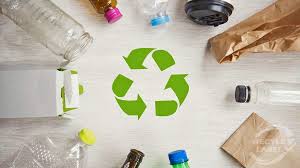Quick summary: Vietnam is facing a large amount of plastic waste and a fragmented recycling system, heavily dependent on the informal collection sector. Despite the presence of many recycling plants and a growing market for recycled materials, the proportion of plastic actually returned to the supply chain remains limited; at the same time, our country used to be a large importer of plastic scrap, increasing pressure on the processing system.
1. Scale of plastic waste and the amount of plastic “released into the environment”
National generation: A recent synthesis publication recorded that Vietnam generated about 3.8 million tons of plastic waste in 2023 (note: other sources in the same period have estimates in the range of 2.8–3.9 million tons depending on the calculation method).
Amount of plastic in the ocean/land: Estimates of the amount of plastic released into the ocean each year range from 2.8–3.1 million tons, and the amount released into the ocean is estimated at 0.28–0.73 million tons/year depending on the study. This is why Vietnam is often ranked among the countries with high levels of plastic leakage into the marine environment.
2. Collection capacity — who is doing the recycling?
Role of the informal sector: Vietnam’s recycling and collection system relies heavily on the informal collection sector (waste pickers): some reports suggest that >90% of plastic collected for recycling is done by this sector, with tens of thousands of people collecting and sorting plastic every day in major cities like Hanoi and Ho Chi Minh City. This role is both very important and vulnerable in terms of policy, income, and working conditions.
3. Actual amount of plastic recycled
Recycling volume figures: Research and reports indicate that in 2021, approximately 0.89 million tonnes of plastic were sorted for recycling, but the actual volume recycled into products was approximately 0.77 million tonnes (loss/non-recycling during processing approximately 10%); these figures suggest that approximately ~0.7–1.0 million tonnes/year of plastic entered the recycling cycle in the early 2020s.
Ratio of recycling to generation: Compared to total annual generation (≈3M+ tonnes), the recycled portion is still only a small fraction — typically less than 30% depending on the calculation (collected for recycling vs. actually recycled into products).
4. Problems from importing plastic scrap
Scrap imports: Previously (2020–2022) Vietnam was one of the major importers of plastic scrap; reports and investigations showed that the amount of imported scrap used to be up to hundreds of thousands of tons/year and most of it was not sorted cleanly, increasing the load on the domestic recycling system. Sources noted that only about a third of imported scrap was properly processed — the rest could be buried, burned improperly, or leaked into the environment.
5. Main causes of the current situation
Dispersed collection system, low collection and sorting rate at source.
Different quality recycling technology; many small, family-scale facilities cause loss, pollution (smoke, wastewater) and reduce the quality of recycled materials.
Reliance on informal collection sector undermines the ability to manage safety and data transparency.
endplasticwaste.org
Imported scrap flows are not fully controlled (the situation before negotiations/tightening of international import regulations).
Reuters
6. Consequences (environmental – social – economic)
Environmental: plastic leakage into the sea, clogged drainage systems, microplastic pollution.
Social: informal collectors face health risks, unstable income.
Economic: value of recycled materials is reduced due to contamination; opportunities to develop recycled plastic supply chains are wasted.
7. Existing policies and efforts
Governments and international organizations (World Bank, GIZ, WWF, private partnership projects) are implementing a roadmap to reduce single-use plastics, improve waste management, pilot responsible collection models, and support improved conditions for collectors. Some projects also aim to control waste imports and raise treatment standards at domestic facilities.
8. Recommendations (short — feasible actions for Vietnam & businesses)
At the national / management level
Tighten waste import management and raise waste quality standards in the country.
Promote the “source-sorting collection” model with regulations and financial incentives; build a formal collection system connected with the private sector.
Business / Production
Adopt recyclable packaging design and increase the proportion of recycled input materials (rPET, rPE, rPP) in product.
Community / Society
Support the formalization and protection of collectors: health insurance, equipment, collection cooperatives — both social equity and increased collection efficiency.
endplasticwaste.org
9. Conclusion
Vietnam has both great opportunities and challenges in transitioning to a circular plastics economy: opportunities from the growing demand for recycled materials, but challenges lie in improving collection quality, technology, import management of plastics scrap and protect informal collectors. With a combination of strong policies, technology investment and the promotion of a circular economy, Vietnam can reduce plastic leakage into the environment and increase its actual recycling rate in the coming years.
Main sources:
SWITCH-Asia — Plastic policies in Vietnam (compiled data 2023). SWITCH-Asia
WWF Asia — Report on plastic waste generation (statistics and recycling flows 2021). WWF Asia
World Bank — Toward a National Single-use Plastics Roadmap in Vietnam (estimated plastic discharge to land/sea). World Bank
EndPlasticWaste / VietCycle project — role of informal collectors (>90%). endplasticwaste.org
Reuters — investigation on scrap imports and processing difficulties (investigative article). Reuters



 Tiếng Việt
Tiếng Việt 日本語
日本語